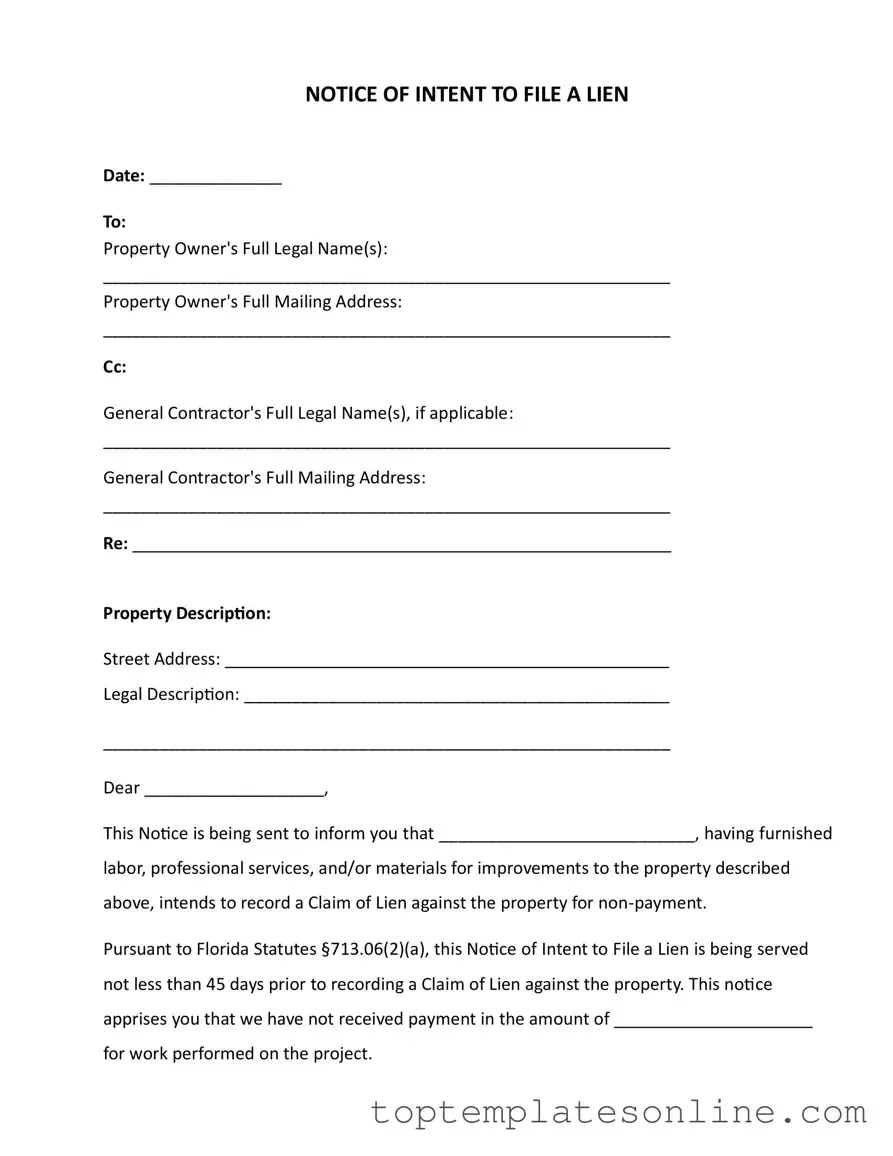Fillable Intent To Lien Florida Form
The Intent to Lien Florida form serves as a formal notice to property owners that a contractor or service provider intends to file a lien against their property due to non-payment for services rendered. This proactive step, required by Florida law, aims to inform property owners of potential legal action while providing them an opportunity to resolve payment issues. Understanding this form is crucial for both contractors seeking to protect their rights and property owners looking to avoid complications.
Customize Intent To Lien Florida Here
